A train ride around Europe's most active volcano
Imagine scaling an active volcano – by train! In Sicily, a historic narrow gauge railway runs all around Mount Etna, connecting the villages on its slopes up to an altitude of 1,000 meters.
Imagine scaling an active volcano – by train! In Sicily, a historic narrow gauge railway runs all around Mount Etna, connecting the villages on its slopes up to an altitude of 1,000 meters.
The Ferrovia Circumetnea was built between 1895 and 1898 to facilitate the transport of goods between the coast and eastern Sicily’s interior, linking the ports of Catania and Riposto with the settlements scattered around the volcano.
The original steam locomotives – one of them, built in Belgium in 1910 by Ateliers de Constructions de la Meuse, can be seen exhibited at the Catania Borgo station – were replaced in 1937 by a new set of motor coaches called littorine.

Two little littorine, dating back to the 1950s and 1960s, have continued running up and down the volcano to this day. You can see them departing from Riposto every morning for their regular service or laboriously tackling the inclines in summer, when they are also used for tourist rides through the vineyards on the volcano’s slopes.
Living Under Etna’s Shadow
Building a railway around the steep slopes of an active volcano in the late 19th century was no easy feat, but the challenge didn’t stop once the project was completed.

The Circumetnea had to deal with the obvious problem linked to its location – eruptions. Due to periodic lava flows, the route was interrupted or diverted several times in the past century. In 1911, liquid fire interrupted the passage near the town of Piedimonte Etneo. In 1923, the filmmaker Jean Epstein documented another eruption next to Linguaglossa in La Montagne Infidéle. Then again, in 1928, the volcano’s outburst destroyed the entire town of Mascali, including the local station which was closed never to reopen.
Throughout centuries, the volcano has affected the history of places and people, destroying cities and depriving the inhabitants of everything they had worked so hard to build, from houses to crops. It’s no coincidence that Catania's motto, inscribed on one of the city gates, reads “Melior de cinere surgo” – better I arise from the ashes. So, why live in such a dangerous place? We know a volcano can be destructive, but we aren’t afraid of it. Etna knows how to make amends.
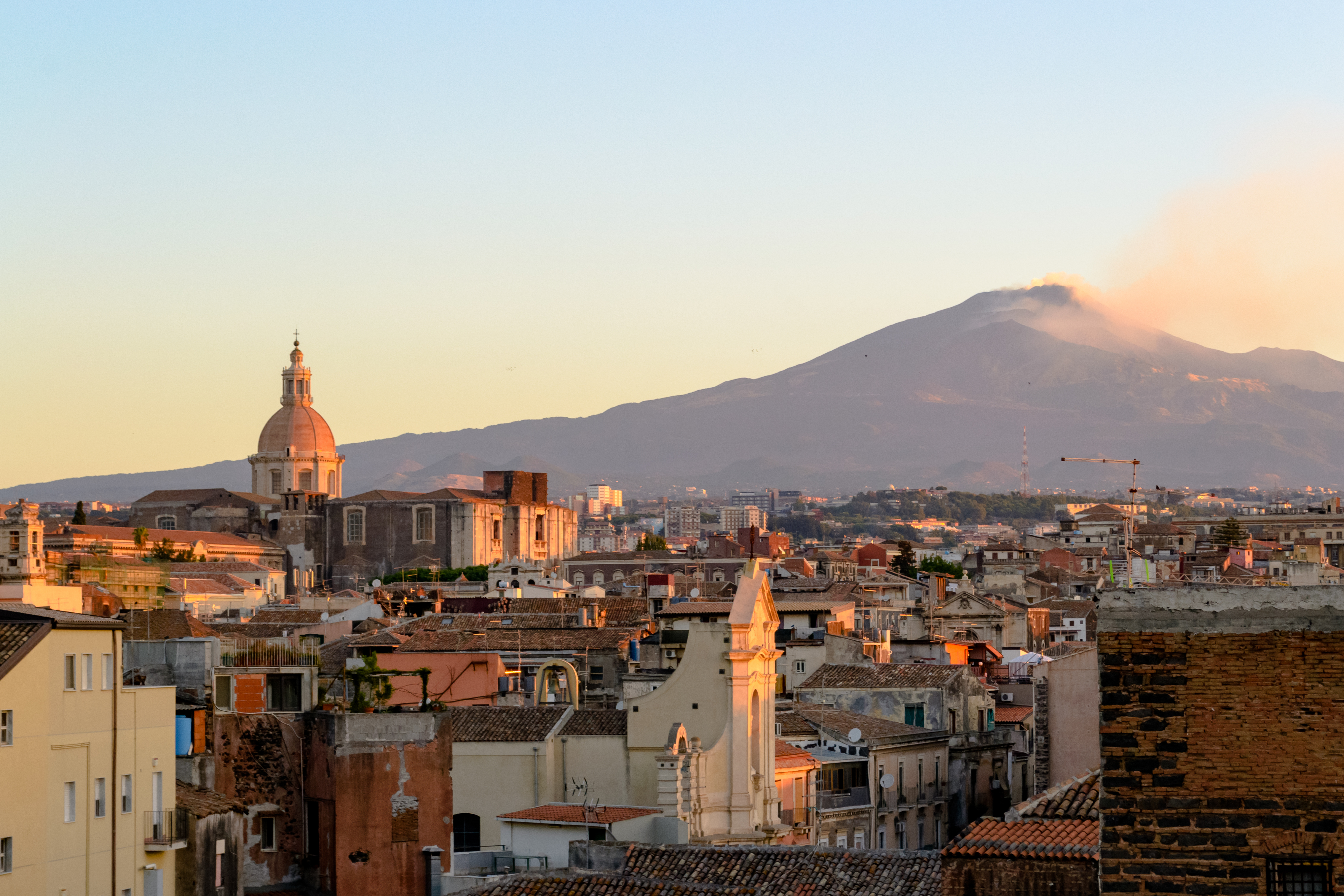
Our mountain can be generous, too. Apart from the poignant beauty of the place, UNESCO-listed since 2013, the volcanic soil is particularly fertile. The wines produced on volcanic soil, such as Etna Bianco DOC and Etna Rosso DOC, are considered among the best in Europe. Moreover, lava tunnels favor underground aquifers that feed on the snow, so it can also supply water. Roads and buildings are built using lava rock. Plus, Etna’s immense size, surpassing 3,330 meters in altitude, protects its surroundings from the wind.
Her Highness Mount Etna is like a mother to us, protecting and nurturing her children, even if she occasionally gets angry. For us who live below her shadow, the volcano is woman – we call it with the feminine name a muntagna, despite it being the seat of the male god Hephaestus, according to the myth.
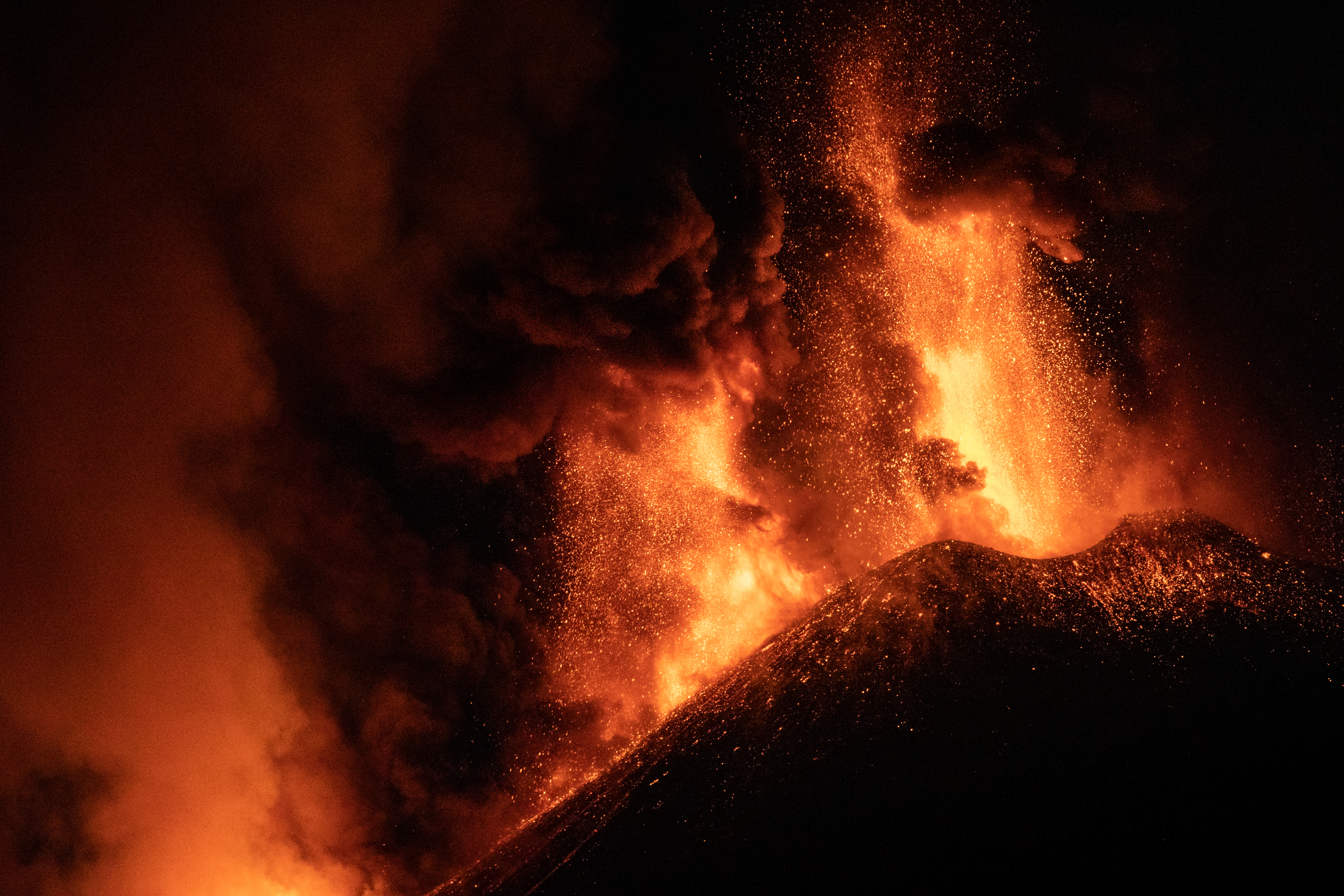
This solitary mountain can be seen from every point of eastern Sicily and offers a variety of landscapes. Novelist Edmondo De Amicis described it in his Memories of a Sicilian Journey after traveling on the Circumetnea in the early 1900s.
“My gracious reader, should you one day go to Catania, remember to take the Circumetnea, and you will declare it the most enchanting circular, seven-hour journey on the face of the earth. This railway that runs through an earthly paradise, interrupted here and there by hellish areas, is all in all a sequence of wonderful views of Mount Etna and the sea, of gardens and lava, small extinguished volcanoes and lush green valleys, pleasant villages and forest patches.”
The Slow Journey Around the Volcano
So let's embark on this trip to find out what lies along the route of this single-car train that climbs puffing and clanking. At every turn Etna looms, a companion through the whole trip.
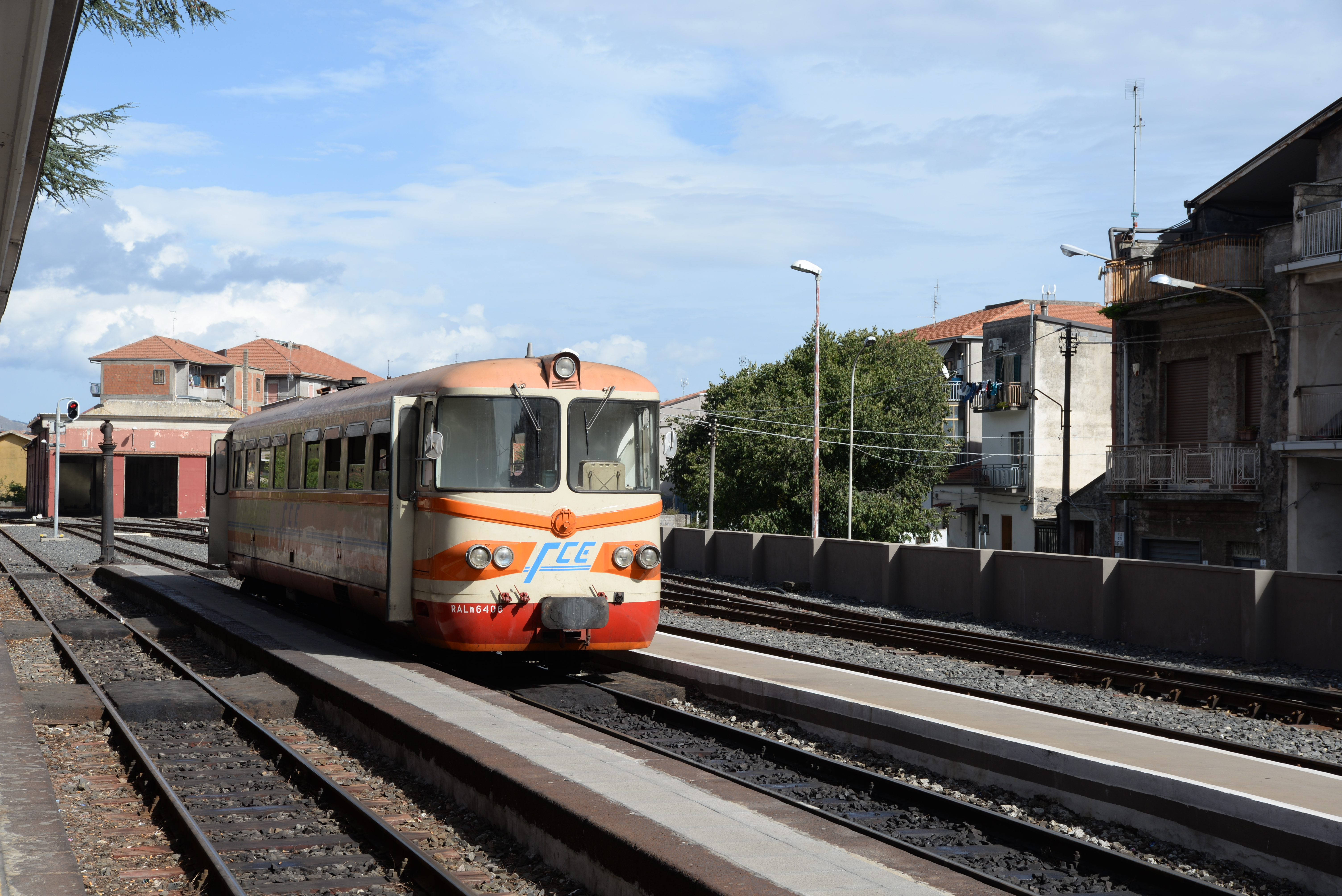
The Circumetnea runs over a horseshoe-shaped route between Catania and Riposto. You can begin your trip from either location, but starting from Riposto means experiencing the countryside shine under the morning sun.
Traveling from Riposto to Catania (or vice versa) takes about three hours. Yet, it’s worth dedicating a full day to visit the villages on the route. The train is worth riding for views of Mount Etna, but it also allows you to discover unknown corners of Sicily. The train schedules let you easily split the trip by hopping off and back on along the way.
Ask a local what the Circumetnea means to them, and they’ll probably bring up many childhood memories about their journeys on the clunky littorina. Still today, the train is used to ferry pupils to school. However, you’ll hardly see it crowded, as students fill the early morning routes and just a few tourists take the train in the summer months. It’s still a well-kept secret.
The train clatters in at the station a few minutes before departure and stops with a hiss. A daily ticket costs €8 and allows you to get on and off the train wherever you like. Grab a seat near the window – photo opportunities abound – but avoid the temptation to lean out, as the train rattles uphill so close to farmland that citrus branches thump against the carriage.
In the first part of the journey from the seaside town of Riposto, you will see the majestic Etna puffing away in the distance as the slow old train crosses citrus and olive groves, almond orchards, crops of prickly pear cacti, vineyards, bare lava fields similar to a lunar landscape, little farms, old abandoned stations, small churches and noble villas. The scenery is spectacular and varied – as you cross dark lava formations amidst the rugged Mediterranean countryside, you’ll see the sparkling sea on one side and the summit smoking on the other.

The journey to Linguaglossa takes 40 minutes. Its name means tongue tongue in Latin (lingua) and Greek (glossa), probably referring to the fiery tongues flowing from the volcano’s mouth. Linguaglossa is the gateway to Etna Nord, a popular ski destination in the winter months. Piano Provenzana, where most of the hikes depart from, is 20 kilometers away. If you want to climb up to the summit craters, arrange a half-day excursion in advance. You can stay overnight in Linguaglossa and take the train back the next morning. Otherwise, continue to the next stop, Randazzo.
The stretch that runs from Linguaglossa to Randazzo is quite spectacular. You are crossing the valley of the Alcantara River, which has carved deep gorges in the volcanic basalt over centuries. Lush vineyards grow all around. The so-called Strada del Vino dell’Etna passes through here. It’s a paradise for wine lovers. From April to November, you can book a wine tour by train departing on Thursdays and Saturdays. The tour includes a train ticket, a guide, and a wine bus that takes you to the cellars. You will taste Etna’s wines and learn how they are produced on the volcanic soil and, if time allows, you can also visit the fascinating town of Castiglione di Sicilia.
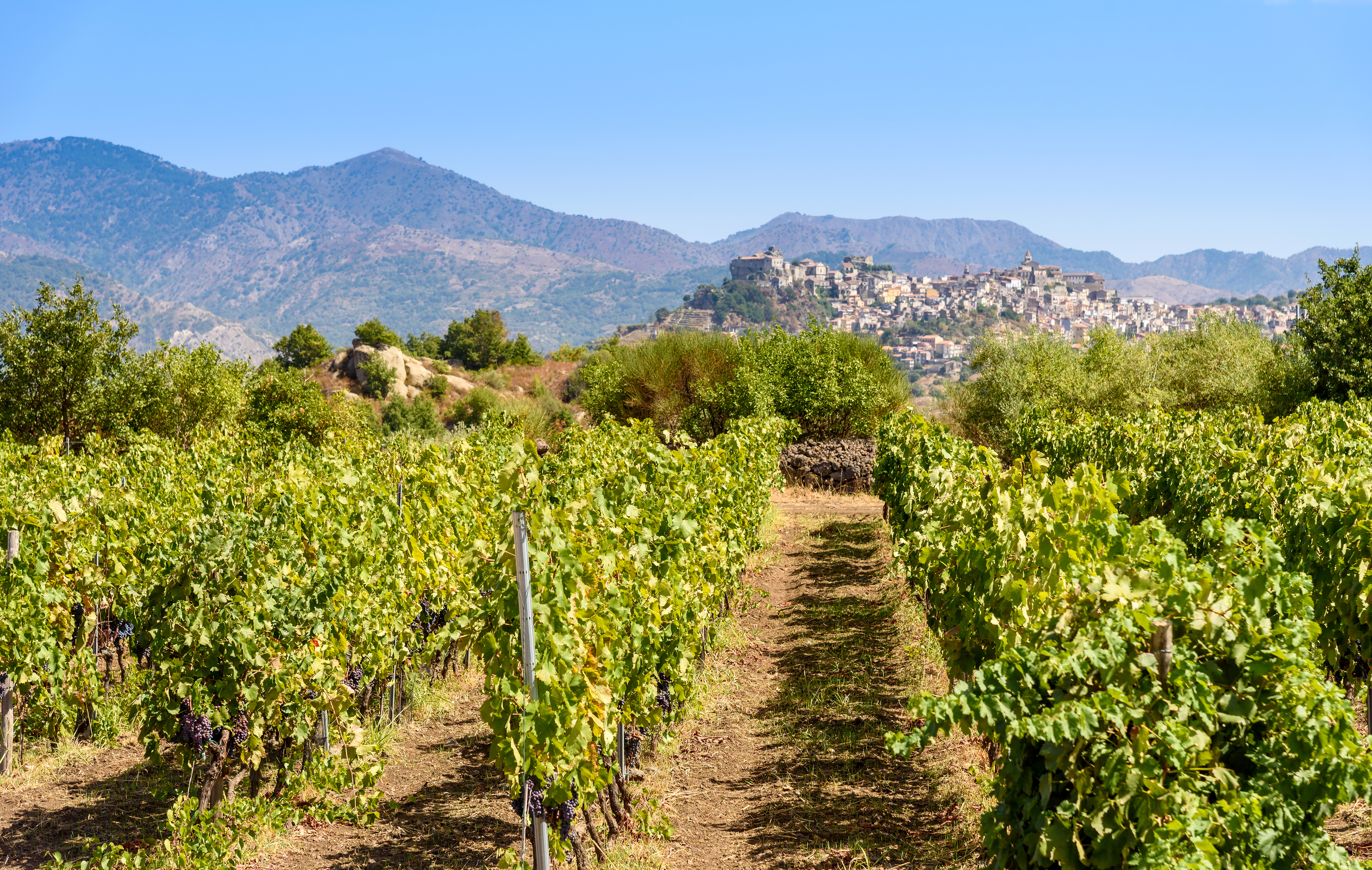
Your next stop along the train route is Randazzo, the closest village to the summit sitting at an altitude of 765 meters. It’s a medieval town built entirely of lava stone. Three ancient churches correspond to as many old neighborhoods: Santa Maria, the Latin quarter; San Nicola, the Greek quarter; San Martino, the Lombard quarter. Until the 16th century, you could hear three different languages spoken here. Keep your nose up as you stroll around Randazzo to avoid missing the town’s mullioned windows, as seen on Palazzo Clarentano. You can also visit the Swabian castle, once part of the city walls and now hosting the local archaeological museum.
If you happen to visit in mid-August, you can join the celebrations for the Madonna Maria Santissima Assunta held on the 15th of August. On this day, a giant Vara moves along the whole via Umberto I, Randazzo’s main street, starting from the apses of the church of Santa Maria. The Vara is a 20-meter-high triumphal chariot representing the Marian Mysteries of death, assumption and coronation. Thirty children sit on various levels of the wagon (no worries, they are firmly tied!), acting as the Virgin Mary, the Apostles, angels and saints.
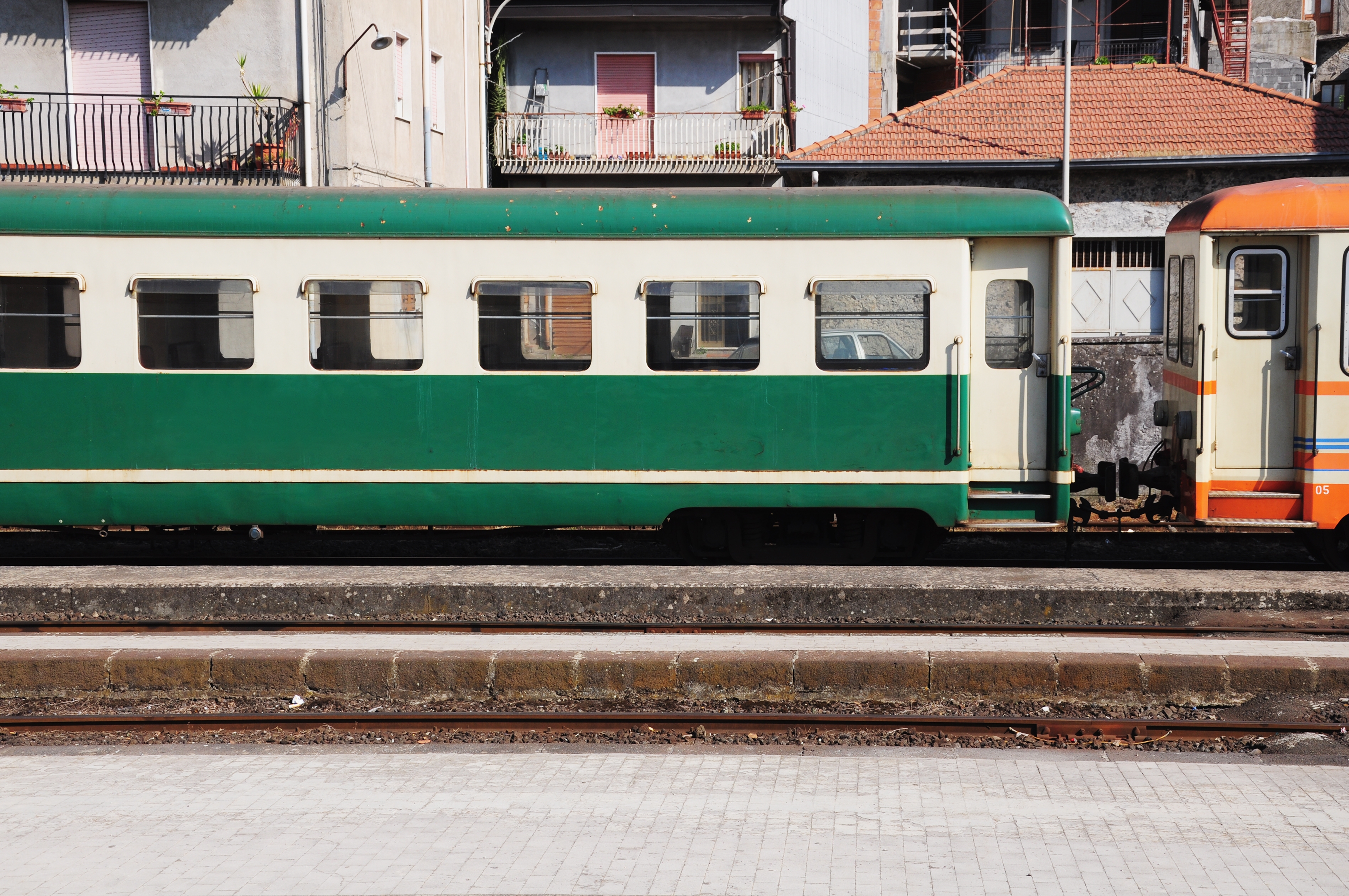
In Randazzo, you must swap into a more modern train – historic carriages don’t travel further. But the old-world journey is not yet over. Shortly before reaching the highest point of the route – in Roccacalanna, 960 meters above sea level – the train crosses the territory of Maletto, renowned for its cultivation of strawberries. During the first weekend of July, you can participate in the Sagra della Fragola (Strawberry Festival).

Next up, you will reach Bronte, a little city lying on the western side of the volcano. Bronte means thunder. It was the name of the Cyclops who forged the lightning of Zeus inside Etna. The city is well known all over Italy for its highly prized pistachios. In April, you can see pistachio fields in full bloom. If you want to taste them freshly picked, come at the end of Summer, during harvest season.
Pistachios first appeared in Bronte during the Arabic domination of the island and have since thrived on the Etna’s fertile lava soil. Locals call the nut frastuca and use it to prepare ice creams, granita, salty sauces, desserts, and custards. Do not miss the chance to taste Bronte’s “green gold” – still harvested by hand – and learn about its production.
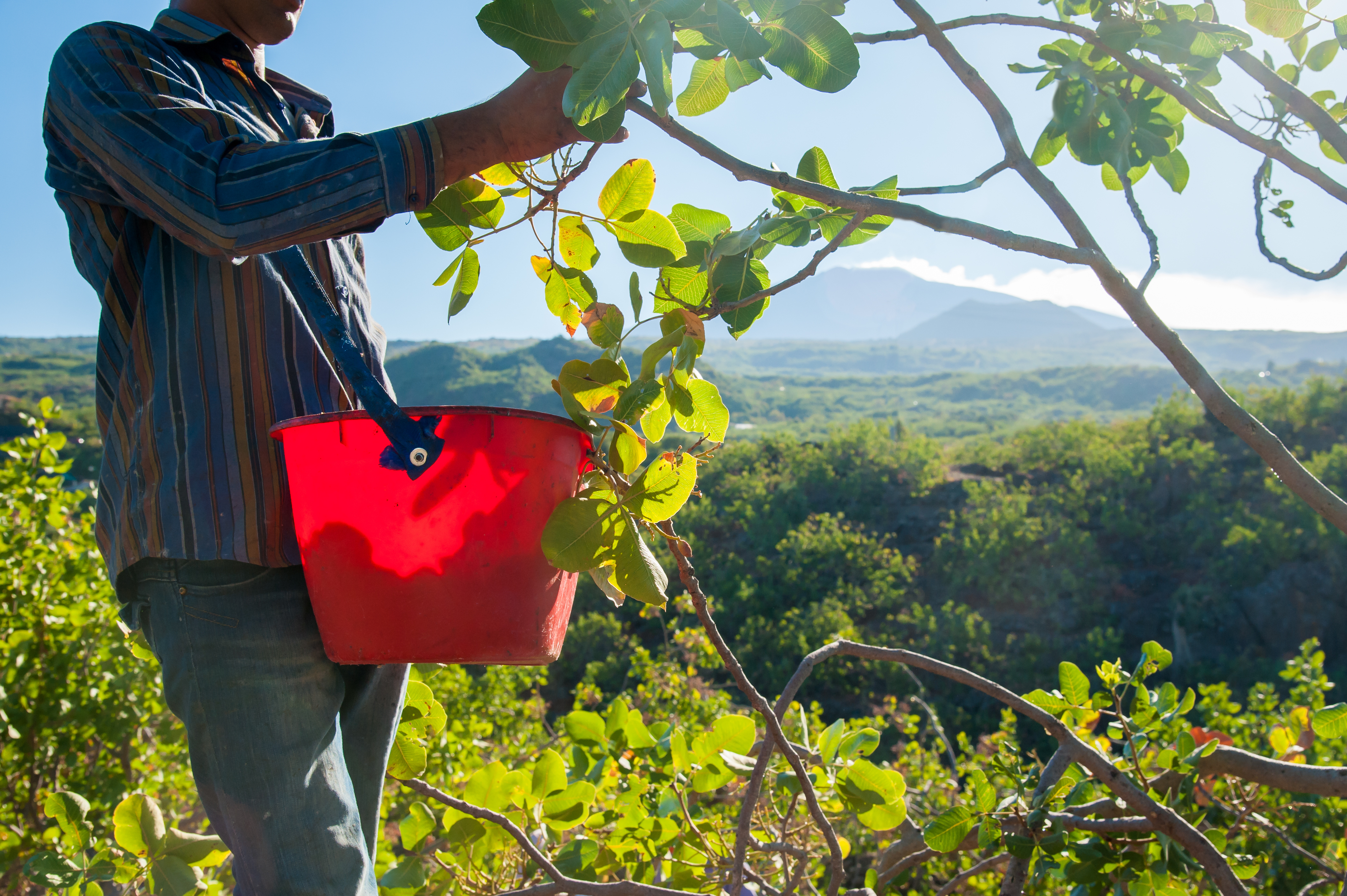
About 10 kilometers from the city center, next to the town of Maniace, is the Ducea di Nelson, a manor built on a former monastery, seat of the Dukes of Bronte from 1799 to 1981. The first was Admiral Horatio Nelson, appointed by King Ferdinand III of Sicily and Naples. From this point, there are no more villages for a while. You’ll be able to enjoy the silence of endless lava fields where new vegetation grows after destruction, interrupted only by the train’s clickety-clack.
Adrano is your last stop before reaching Catania, your final destination. It is a small medieval city with a fortress hosting an archeological museum, some Greek ruins, beautiful churches and noble palaces.
The countryside charm fades in the final leg of the journey as you enter Catania's suburbs – Biancavilla, Paternò, and Misterbianco. The train pulls into the red station of Catania Borgo. The train ticket lets you transition to the metro, whisking you into the city center in just 10 minutes. The ride reaches its endpoint, but the vivid memories of the volcano’s stunning beauty endure.
